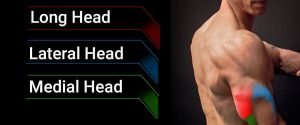What Are Fire Hydrants Workout and Why They Deserve a Spot in Your Routine
When it comes to building strong, sculpted glutes, most people immediately think of heavy barbell hip thrusts, squats, and lunges. But there’s one underrated bodyweight move that often flies under the radar yet delivers serious results — the fire hydrants workout. Whether you’re a beginner looking to activate your glutes or an advanced lifter wanting to refine your symmetry, this deceptively simple move can make a big difference.
In this guide, you’ll discover what are fire hydrants workout, their benefits, variations, common mistakes to avoid, and how to include them in your routine — all backed with a 12-week glute activation plan. We’ll also share key insights into how this simple movement can improve your overall performance in compound lifts and help fix muscular imbalances.
What Are Fire Hydrants Workout?
Fire hydrants workout is a bodyweight exercise designed to activate and strengthen your glutes, especially the gluteus medius. It involves lifting your leg sideways from an all-fours position, mimicking the way a dog lifts its leg beside a fire hydrant — hence the name.

Does It Have Anything to Do With Firefighters?
No, fire hydrants workout has nothing to do with actual firefighters or their training routines. The name comes purely from the visual resemblance of the motion — similar to how a dog lifts its leg near a fire hydrant. It’s a lighthearted and descriptive way to label an effective glute exercise, not one connected to the fire service profession.
This movement specifically targets:
- Gluteus medius & minimus (outer glutes)
- Gluteus maximus (main glute muscle)
- Hip abductors & rotators
- Core stabilizers
Fire hydrants are a staple in many warm-up routines, injury prevention programs, and bodyweight glute circuits because they require no equipment yet effectively engage your glutes. This makes them ideal for beginners, home workout enthusiasts, and even competitive lifters who need proper glute priming.
Additionally, when combined with other compound and isolation movements, fire hydrants workout enhances mind-muscle connection and brings greater symmetry to the lower body.
6 Benefits of Fire Hydrants Workout
If you’ve been skipping this move, here’s what you’re missing:
1) Glute Activation
Fire hydrants workout helps activate underused glute muscles, especially the smaller gluteus medius. This is crucial if your glutes tend to stay dormant during squats or deadlifts. Pre-activating your glutes can lead to better form, safer lifting, and more muscle fiber recruitment.
2) Improved Hip Mobility
By taking your hip through abduction and external rotation, fire hydrants help open up tight hip joints. This is particularly important for individuals who spend long hours sitting, which can lead to restricted movement and increased lower back stress.
3) Better Posture & Pelvic Stability
When your glutes are weak, your pelvis may tilt anteriorly, putting strain on the lumbar spine. Fire hydrants strengthen the glute medius and improve alignment, enhancing balance and posture.
4) Injury Prevention
Proper glute engagement stabilizes the hips and knees. This reduces the risk of knee cave-ins during squats and helps protect the lower back during deadlifts or running. Athletes particularly benefit from stronger glutes for better performance and injury prevention.
5) Accessibility & Versatility
Whether you’re in a gym, at home, or in a hotel room, a fire hydrant workout can be done anywhere. You don’t need machines, weights, or even shoes. Plus, it’s easily scalable for any fitness level.
6) Aesthetic Glute Development
Beyond strength and function, fire hydrants help add shape and roundness to the upper outer glutes — the key to achieving a fuller and more lifted glute appearance.
Don’t underestimate the simplicity of this movement — a few sets can leave your glutes burning and pave the way for stronger compound lifts.
How to Do Fire Hydrants Correctly (Step-by-Step Guide)
Starting Position
- Get on all fours with your hands directly under your shoulders and knees under your hips.
- Keep your back flat and core braced. Look straight ahead or slightly downward to maintain neck alignment.
Execution
- Lift your right leg out to the side, keeping your knee bent at a 90-degree angle.
- Keep your hips stable and squared to the floor — avoid twisting.
- Raise your leg until your thigh is roughly parallel with the floor.
- Hold the position for 1–2 seconds at the top and contract your glutes.
- Slowly lower the leg back down with control. Do not rest on the ground between reps.
- Repeat for the desired reps and switch to the opposite leg.
Pro Tips
- Keep your weight evenly distributed between your hands and the supporting knee.
- Avoid leaning or shifting the torso — stay tight through your core.
- Use a yoga mat or padding for your knees if needed.
- Breathe out while lifting and inhale while lowering.
Start with 3 sets of 12–15 reps per leg. As you progress, increase reps or resistance.
5 Common Mistakes to Avoid
Even a basic move like a fire hydrants workout can be ineffective if done wrong. Here are the top mistakes to steer clear of:
- Rotating the torso – The movement should isolate the hip; don’t let your shoulders shift.
- Overarching the lower back – Engage your abs and glutes to stabilize your spine.
- Using momentum – Avoid swinging. Each rep should be slow and controlled.
- Lifting too high – Going beyond your range can reduce glute tension and cause hip strain.
- Uneven reps – Always match the reps and intensity on both sides.
Focus on quality over quantity. Proper form equals better results.
Fire Hydrant Variations to Boost Glute Gains
Want to keep your workouts interesting and progressive? Try these five fire hydrant variations:
1. Fire Hydrant with Resistance Band
Wrap a mini resistance band just above your knees. This adds lateral tension and forces your glutes to work harder throughout the movement.
2. Standing Fire Hydrants
Stand next to a wall or hold onto a chair. Lift your leg sideways in the same bent-knee motion. Great for improving balance and activating stabilizers.
3. Elevated Fire Hydrants
Kneel on a step or yoga block to create more space beneath the lifted leg. This increases the range of motion and activation.
4. Pulsing Fire Hydrants
At the top of the lift, pulse up and down 3–5 times in small, controlled movements before lowering. These burn intensely and enhance time-under-tension.
5. Weighted Fire Hydrants
Use light ankle weights (1–3 kg) to further overload the glutes. Progressively increase weight as strength improves.
Cycle these variations every 2–3 weeks or include them together in a glute circuit to keep your muscles guessing.
How to Include Fire Hydrants Workout in Your Routine
Fire hydrants workout can be strategically placed in various parts of your training routine. Here’s how:
Pre-Workout Warm-Up
Before leg day, perform 2–3 sets of fire hydrants to wake up your glutes and improve neuromuscular connection. This helps ensure your glutes—not your quads or lower back—do the lifting.
Superset with Compounds
Pair fire hydrants with squats, deadlifts, or hip thrusts to increase blood flow and add volume to your glute work.
Isolation Finishers
End your workout with high-rep sets of fire hydrants to fully fatigue the glutes.
Active Recovery Days
Use them as low-intensity movement for active rest and to promote mobility.
Training Frequency & Volume
- 2–3x per week
- 3–4 sets of 12–20 reps per side
- Rest 30–60 seconds between sets
Sample Glute Activation Circuit
- 15 Fire Hydrants (per side)
- 20 Donkey Kicks (per side)
- 20 Banded Side Steps
- 30-second Glute Bridge Hold
- Repeat 2–3 rounds
Who Should Do Fire Hydrants Workout?
Fire hydrants workout is not just for fitness influencers or bodybuilders. It’s a practical movement suitable for:
- Beginners who need a low-impact, joint-friendly exercise to start their fitness journey.
- Athletes and Runners looking to improve hip stability, lateral strength, and reduce injury risk.
- People with Sedentary Jobs who experience tight hip flexors and weak glutes from sitting too long.
- Rehabilitation Clients recovering from lower back, hip, or knee injuries under professional guidance.
- Bodybuilders and Physique Athletes aiming for glute symmetry, definition, and better stage presentation.
- Seniors or Older Adults who want to maintain mobility, stability, and muscle mass safely.
Whether you lift heavy, run marathons, or just want to improve your posture and daily movement — this move belongs in your toolkit.
12-Week Glute Activation Program Featuring Fire Hydrants
To truly unlock the power of fire hydrants workout, consistency is key. Here’s a sample progressive plan:
Weeks 1–4: Foundation & Activation
- Focus: Master form and control using only bodyweight
- Frequency: 2x/week
- Routine:
- Fire Hydrants – 3×15 reps/side
- Glute Bridges – 3×20
- Cat-Cow Stretch – 2×10
Weeks 5–8: Progressive Overload
- Add resistance bands or ankle weights
- Include pulsing hydrants
- Frequency: 3x/week
- Routine:
- Banded Fire Hydrants – 4×20 reps/side
- Donkey Kicks – 3×15
- Side-Lying Clamshells – 3×20
Weeks 9–12: Performance Phase
- Combine with compound lifts
- Focus on explosive movement and time under tension
- Routine:
- Weighted Fire Hydrants – 4×15
- Bulgarian Split Squats – 3×10 each leg
- Standing Fire Hydrants – 3×20/leg
Track your weekly progress. Record reps, resistance, and glute feel to stay accountable.
Final Thoughts: Why You Should Add Fire Hydrants Workout Today
Now that you know what are fire hydrants workout, there’s no excuse not to include them. This simple bodyweight move targets key glute muscles, boosts stability, supports compound lifts, and improves aesthetics — all without needing any equipment.
From athletes to beginners, the fire hydrants workout deserves a regular spot in your routine. Its versatility, effectiveness, and ease of use make it a go-to choice for achieving better glutes and improved movement. Stay consistent, progress gradually, and you’ll feel and see the results.
FAQs About Fire Hydrants Workout
Can Fire Hydrants Workout Grow Glutes?
Yes — especially when done with added resistance, high volume, and progressive overload. While not a mass builder like squats, they contribute to glute shape and definition.
Are Fire Hydrants Workout Safe for Knees or Hips?
Absolutely. They’re low-impact and joint-friendly when performed with proper form. If you experience pain, reduce your range of motion, or consult a physiotherapist.
Can Men Do Fire Hydrants Workout?
Of course! Glute strength is essential for men, too — for performance, posture, injury prevention, and aesthetics. There’s nothing “gender-specific” about this movement.
How Often Should I Do Them?
2–3 times a week is ideal. You can include them in warm-ups, circuits, or cooldowns depending on your program.
Do I Need Any Equipment?
Nope. But resistance bands or ankle weights can enhance results. A mat for comfort is recommended.






